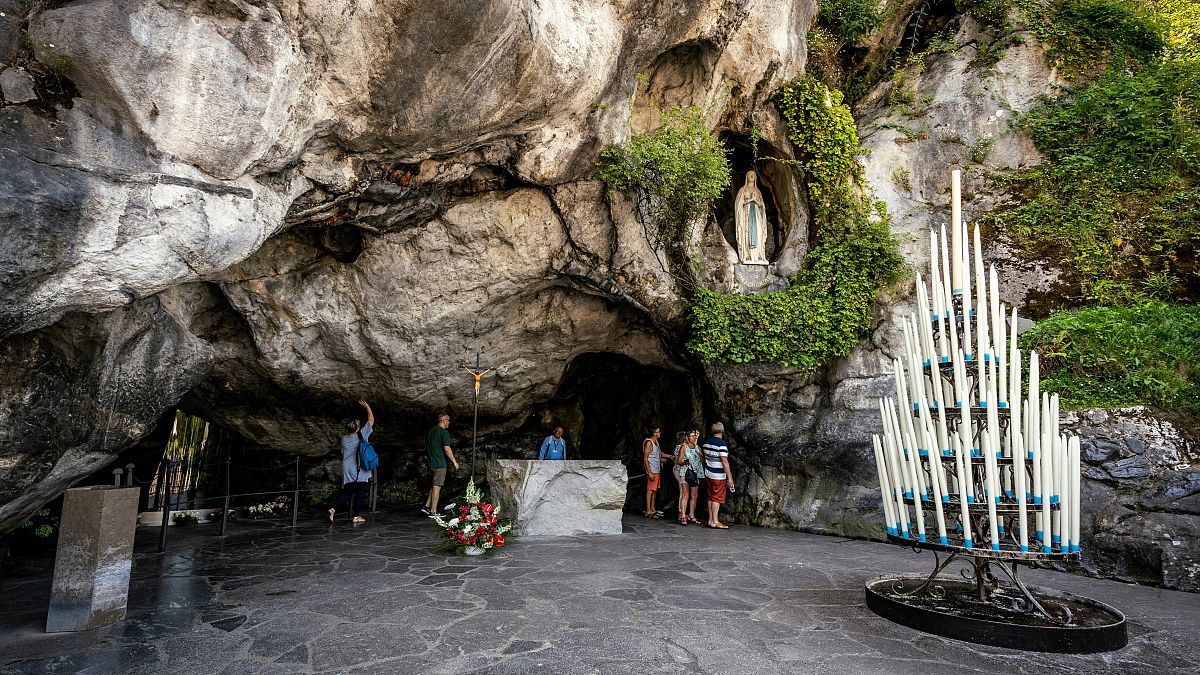This week, the Vatican officially approved religious pilgrimages to Međugorje in Bosnia.
This week, the Vatican officially approved religious pilgrimages to a southern Bosnian village where children reported seeing visions of the Virgin Mary.
While it didn’t declare that the apparitions in Međugorje were authentic or of supernatural origin, it approved public acts of devotion at the site justified by the powerful spiritual experience of visiting.
The papal green light is essential for validating pilgrimage destinations – and it is also a key economic driver.
Religious tourism is a lucrative business. Millions of people travel each year for pilgrimages or spiritual reasons and an industry of accommodation, guides and transport has grown up around this.
Devotees visit for everything from relief from terminal diseases to blessings for future endeavours.
Međugorje, Lourdes, Fatima: Europe’s most important sites of religious tourism
In 1981, six children and teenagers reported seeing visions of the Madonna on a hill in Međugorje, located in the wine-making region of Herzegovina.
Some of those original ‘seers’ have claimed the visions have occurred regularly since then, even daily, and that Mary sends them messages.
As a result, Međugorje has become a major European pilgrimage destination for Christian believers, attracting millions of people over the years.
Last year alone, 1.7 million Eucharistic wafers were distributed during Masses there, according to statistics published on the shrine’s website, a rough estimate of the number of Catholics who visited.
With approval from the Holy See, Međugorje now joins more established Catholic sanctuaries in Fatima and Lourdes – although here the Marian apparitions have been declared authentic by the Vatican.
Fatima, a town in central Portugal, is home to a sanctuary which marks the spot where the Virgin Mary allegedly appeared before three children in 1917.
Pilgrimages here now take place on the 13th of each month between May and October with the largest crowds – up to a million – visiting on 13 May and 13 October.
Lourdes in southwest France is famed for the Sanctuary of Our Lady of Lourdes.
Every year, millions of pilgrims and spiritual tourists visit the Grotto of Massabielle where a local 14-year-old girl is said to have experienced a Marian apparition in 1858.
In the grotto, the faithful drink or bathe in water flowing from a spring, which is said to have curative properties.
The lucrative world of religious tourism
Over the years, local bishops and Vatican officials have cast doubt on the reliability and motivations of the ‘seers’ at Međugorje because of concerns that economic interests may have been driving their reports of continued visions.
Religious tourism has moulded the local economy, with an entire industry catering to pilgrims: hotels, private accommodations, family-run farm businesses, even sports complexes and camping sites.
It is the same story in Fatima and Lourdes, where faith “stimulates the migration of millions of people each year and with that, substantial commercial enterprise,” Vanessa J. Panaligan writes in her paper ‘Pilgrims, Prayers, and Profits: Assessing the Cultural Significance and Economic Value of Lourdes’.
According to Panaligan, the small and unassuming town of Lourdes often rivals the metropolitan city of Paris in visitor numbers – and it has the second-largest hotel capacity in France after the capital.
While only 15,000 people live in Lourdes, five to six million tourists visit every year.
The result is a dynamic hospitality industry and significant economic gain.
“Through the goods and services industries, especially in hospitality, an estimated total of €270 million per year is profited by the town,” Panaligan writes.
Particularly numerous in Lourdes because of the healing waters but present at most pilgrimage sites are elderly, infirm or incapacitated visitors that need dedicated services.
This means facilities like hospitals and specialised centres receive additional government funding.
Although the core religious or spiritual experience like attending mass or drinking holy water is free, pilgrims are encouraged to spend money through many other avenues.
Around the religious sites and throughout the surrounding urban centres of Fatima and Lourdes, there are hundreds of souvenir shops selling memorabilia like Virgin Mary statues or containers for holy water.
Lourdes looks to more profitable, sustainable tourism post-pandemic
Lourdes’ almost total economic dependence on religious tourism was laid bare during the pandemic when pilgrimages were brought to a sudden halt.
In response, the town is rethinking its “pastoral actions”, priest Olivier Ribadeau Dumas told National Geographic.
The state has earmarked €140 million to broaden the appeal of Lourdes beyond the typical pilgrim tourist to include a wider (less religious) swathe of society.
There will be an e-bike and car-sharing programme to facilitate movement between neighbouring towns and a night train has been reinstated.
Large areas of the town have been pedestrianised and marketing campaigns have been designed to highlight Lourdes’ forgotten non-spiritual attractions.
With Europe’s faith in a decades-long decline into secularism, will branching out beyond a spiritual appeal be the future of other Vatican-sanctified sites too?

